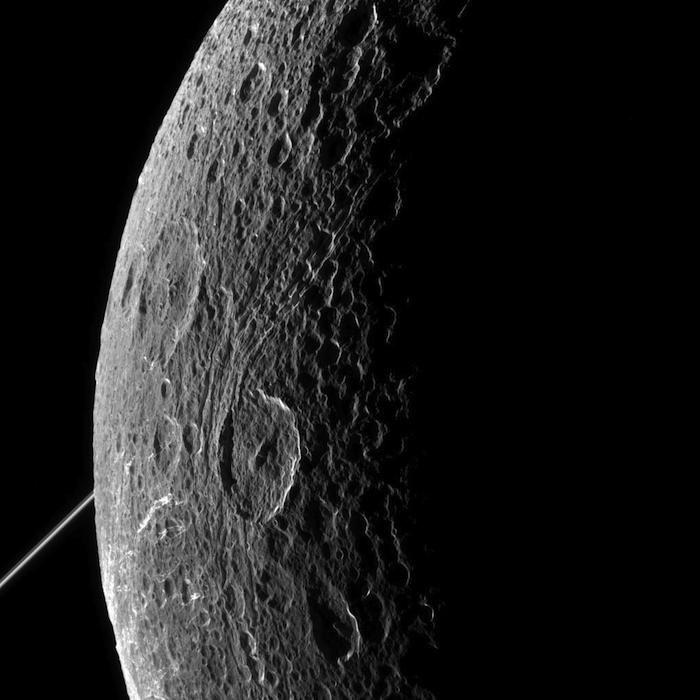Cassini to make final flyby of Saturn’s moon Dione
Cassini spacecraft from NASA is on its final close up of Dione, the Saturn’s moon today whizzing past within 295 miles of its surface.
Visible in the gallery, in order: an infrared shot of Saturn; Dione (left) and Mimas (right) passing before the gas giant; Dione crossing the famous rings; a close-up of Dione; a further close-up, displaying its mysterious chasms; a false-color photo of the moon, Hyperion. The nature of these features was unclear until 2004, when the Cassini spacecraft showed that they weren’t surface deposits of frost, as some had suspected, but rather a pattern of bright icy cliffs among myriad fractures. In 2011, the spacecraft performed an even closer flyby of the moon, dropping with 60 miles of its surface.
Researchers are also expecting to decode much more about the internal structure of the moon using Gravity science data after the flyby and then compare that with the other moons of Saturn numbering 62 though this craft could explore only a handful of them. Cassini obtained the image with its narrow-angle camera on April 11, 2015.
While Titan and Enceladus have (rightly) captured the imagination of planetary scientists and space fans, Dione is no slouch.
Dione’s north pole will be targeted by Cassini’s cameras and spectrometers, and mission engineers believe the resulting pictures will give a clear view of Dione as if taken from only a few feet away. The view was acquired at a distance of 68,000 miles (110,000 km) from Dione. North on Dione is up. Meanwhile, Cassini’s Cosmic Dust Analyzer continues its search for dust particles emitted from Dione.
“Dione has been an enigma, giving hints of active geologic processes, including a transient atmosphere and evidence of ice volcanoes”, Cassini science team member Bonnie Buratti. “Cassini has provided insights into this icy moon’s mysteries, along with a rich data set and a host of new questions for scientists to ponder”, said Scott Edgington, Cassini mission deputy project scientist at JPL, Space Daily reports.
“But we’ve never found the smoking gun”, she said in a NASA statement. Previous flyby images illustrated Dione’s canyons and bright features. The final act of the mission will take a year to setup before the spacecraft makes the dive through Saturn’s expansive rings.








